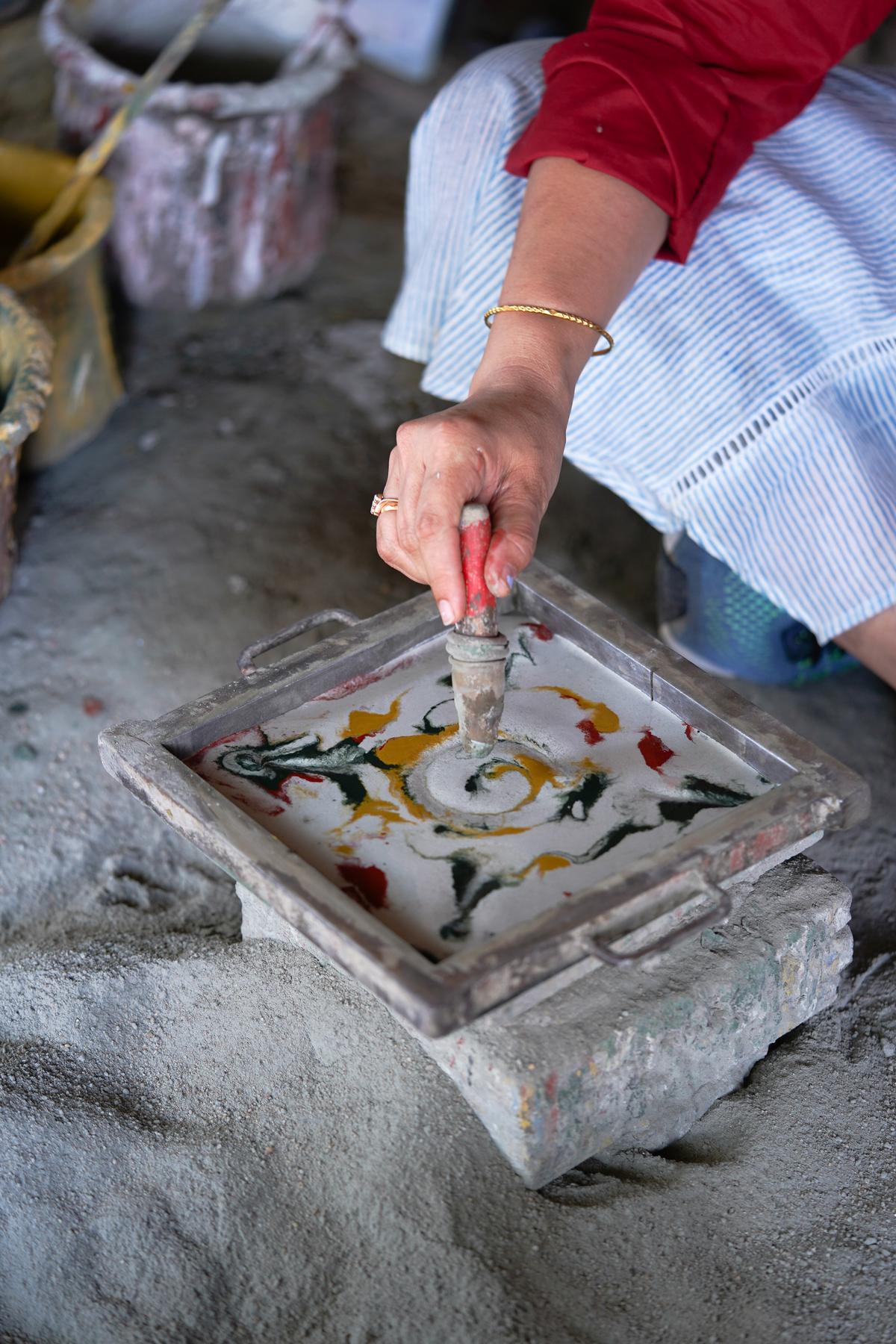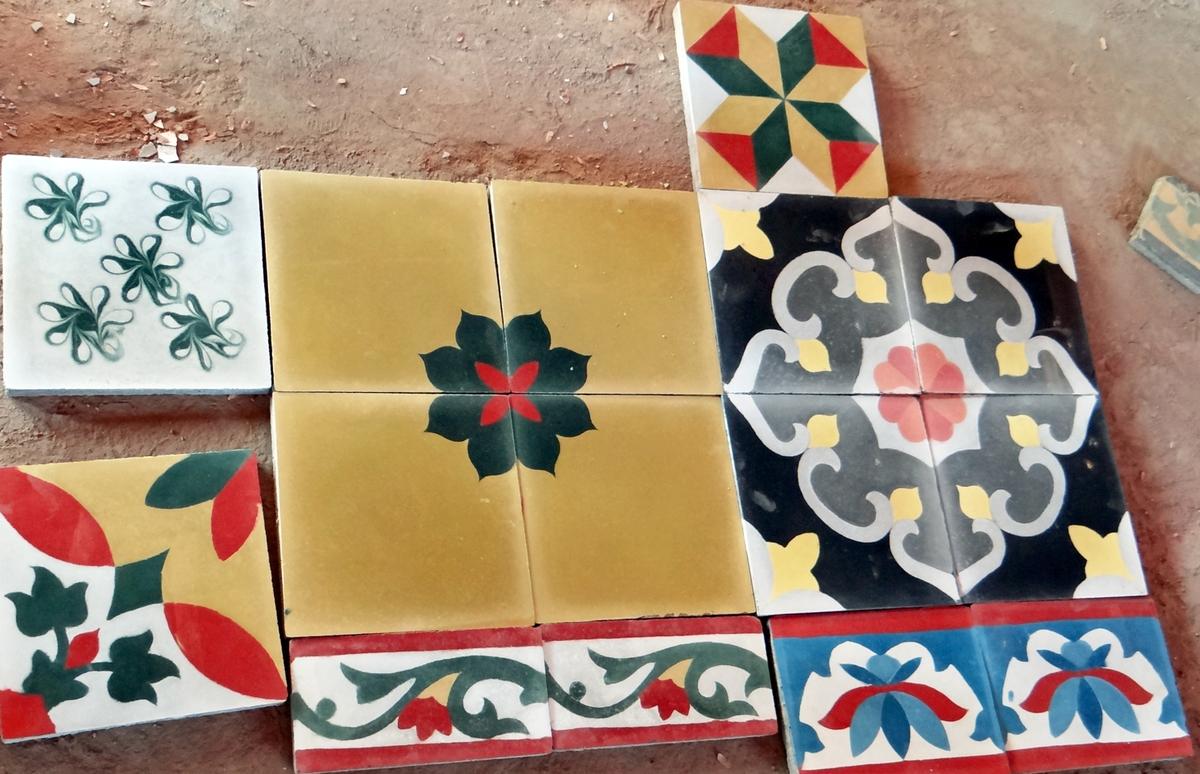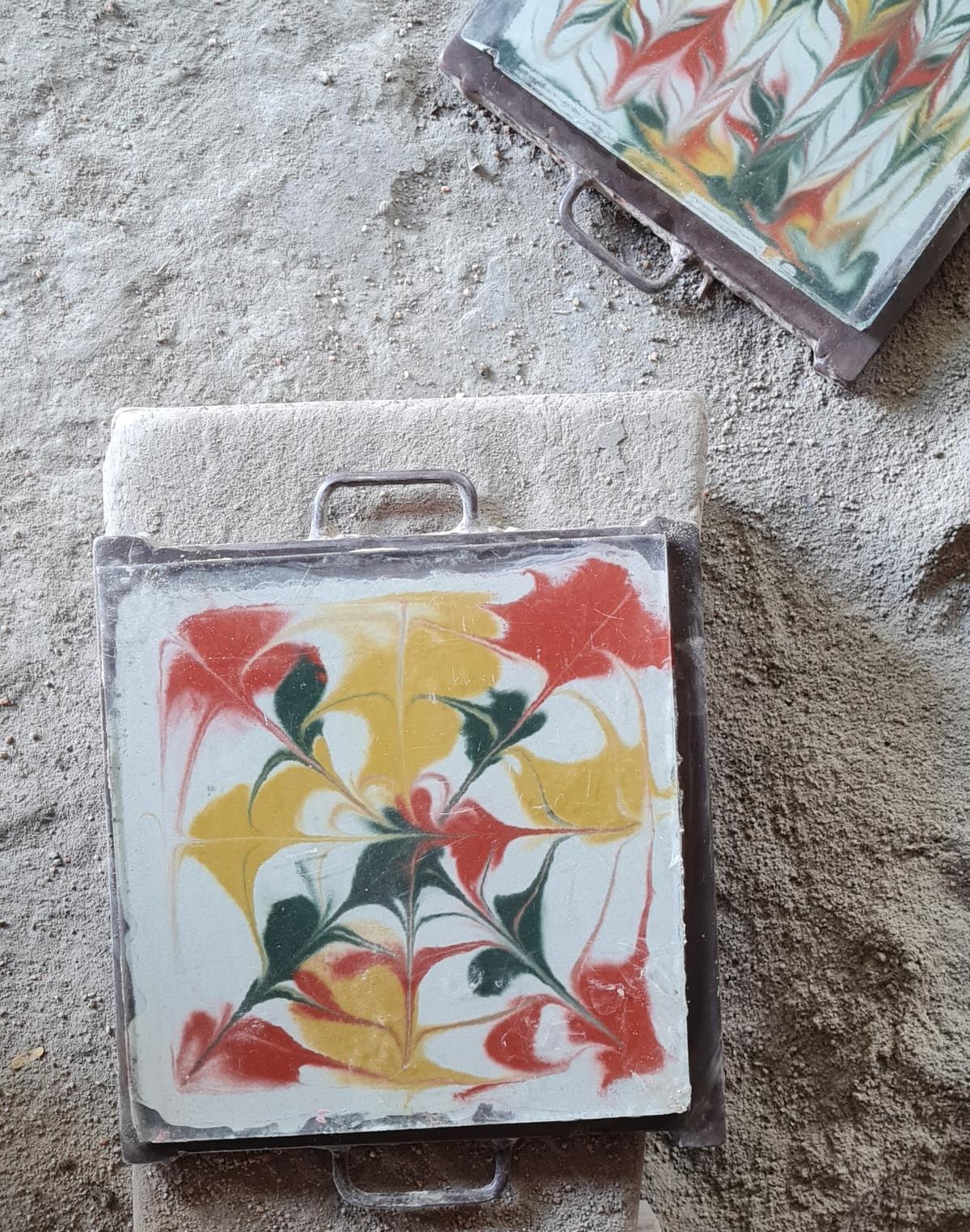In Tamil Nadu’s Chettinad region lies a small village named Athangudi. What’s so special about this little village? The handmade, vibrant, and geometrically brilliant Athangudi tiles come all the way from this very village. The craftsmanship legacy that lies synonymous with the place is renowned worldwide, and Athangudi tiles are more than just flooring materials — they are a reflection of the aesthetic sensibility and skilled craftsmanship of South Indian culture.
The mould used for Athangudi tiles.
The history
In the 19th and 20th Centuries, architectural influences from around the world came knocking at India’s door, and fascinated by elaborate woodwork, stained glass, stucco designs, and even ceramic tiles, the importation of such tiles became a regular practice for the privileged class.
However, with time, it became nearly impossible to keep up with the repair work of the same. Soon, a more affordable alternative was needed, and artisans from Athangudi started replicating European tiles using local and natural materials.

Handcrafted Athangudi tiles
| Photo Credit:
FLICKR
What’s special?
1. Each tile is handcrafted using traditional techniques that have been passed down through generations, with no machinery involved.
2. They use local resources, generate minimal waste, and are biodegradable.
3. They are made by drying naturally under the sun without the use of external energy sources like kilns or electricity.
4. These tiles often feature family insignias, floral motifs, paisleys, birds, geometric shapes, and borders in rich hues like deep red, mustard yellow, bottle green, and indigo blue.
5. Once cured, these tiles become harder with age and are resistant to wear and tear, making them ideal for both homes and public buildings.
6. They are also said to become shinier and smoother with time and are easy to polish using coconut oil.

The process
-
The mould is a square metal frame with a glass plate as the base, giving the tile a smooth and shiny finish.
-
A design stencil made of iron or brass is used to pour various colours into specific areas. The coloured paste is composed of white cement, coloured oxide pigments, and water. Artisans carefully pour each colour into the stencil to ensure the design matches the intended pattern.
-
Following the design layer, a layer of dry cement and sand is applied on top. This serves as a binding layer and gives the tile its body. Then another layer of cement slurry is applied to keep everything together.
-
The mould is lifted carefully, and the tile is kept aside for setting. After some time, it is turned over and left to cure for 21 days in water. The water-curing process strengthens and increases the tile’s durability.
-
Once cured, the tiles are sun-dried and polished with coconut husk or stone to achieve a natural shine. Although the entire process is manual and time-consuming, the end result is unique and long-lasting tiles.

Waiting to be cured.
| Photo Credit:
Special Arrangement
Challenges of the legacy
1. Declining Artisan Numbers with younger generations moving toward urban jobs and modern careers, the number of skilled tile-makers is shrinking.
2. Competition from Mass-Produced Tiles as cheaper, factory-made ceramic tiles have flooded the market, reducing demand for handcrafted alternatives.
3. Outside of Tamil Nadu and architectural circles, there is limited awareness of Athangudi tiles and their heritage value.
4. Since the tiles are sun-dried, production slows down during the monsoon season, making year-round production difficult.
More than just ornamental floor coverings, Athangudi tiles are tales in stone, created by artisans carrying on a centuries-old custom. In their intricate patterns and rich colours, echoes of Chettinad’s prosperity and the beauty of handmade craftsmanship come alive. With more awareness, proper marketing, and support for artisan communities, Athangudi tiles can reclaim their place in modern architecture.
